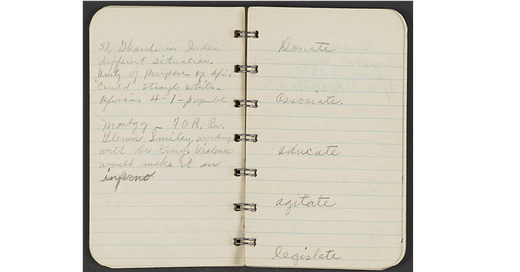Rosa Parks's Radical Notes
"By the time I was six, I was old enough to realize that we were actually not free."
The obvious subject for today’s edition would have been Martin Luther King, Jr., but I’m hoping to visit his archives this summer, so I’ll hold off on writing about him until I have more to report.
More importantly—MLK will get enough attention today. Americans hear his speeches and learn the contours of his biography from an early age. The women of the …
Keep reading with a 7-day free trial
Subscribe to Noted to keep reading this post and get 7 days of free access to the full post archives.




